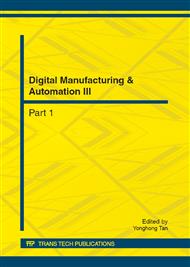p.1065
p.1069
p.1074
p.1079
p.1083
p.1090
p.1094
p.1099
p.1104
The Research on Multi-Level Theses Evaluation Model Based on Fuzzy Cluster Analysis
Abstract:
The traditional process of thesis evaluation is of subjectivity and differences of teachers’ qualifications and backgrounds. Considering these characteristics, this paper proposes a multi-level theses evaluation model based on fuzzy cluster analysis with the idea of fuzzy mathematics. In this model, it evaluates the teachers’ qualification first to determine the weight of various teachers’ evaluation to the thesis; then stratifies theses evaluation indicators, and according to the results of various indicators, it builds a fuzzy equivalent matrix, and ultimately selects the appropriate similarity coefficient to divide the theses into excellent, good, moderate, bad four grades. This model greatly improves the scientificalness and objectivity of the traditional theses evaluation process and provides a reference for the process.
Info:
Periodical:
Pages:
1083-1089
Citation:
Online since:
July 2012
Authors:
Price:
Сopyright:
© 2012 Trans Tech Publications Ltd. All Rights Reserved
Share:
Citation:


